 The Comprehensive Guide to Get Rid of Loose, Saggy Skin
The Comprehensive Guide to Get Rid of Loose, Saggy Skin
If you struggle with loose, saggy skin, you are not alone. Many people are experiencing the same from aging, weight loss, pregnancy, or other reasons. While advertisements want to sell you expensive creams and treatments for saggy skin, it may not be the best solution. You need to address the root causes of saggy skin to reduce your risk and the appearance of saggy with good nutrition, lifestyle strategies, and supplementation.
In this article, you will learn what loose, saggy skin is. I will explain the main root causes of saggy skin. Finally, I will share my top natural support strategies for saggy skin.
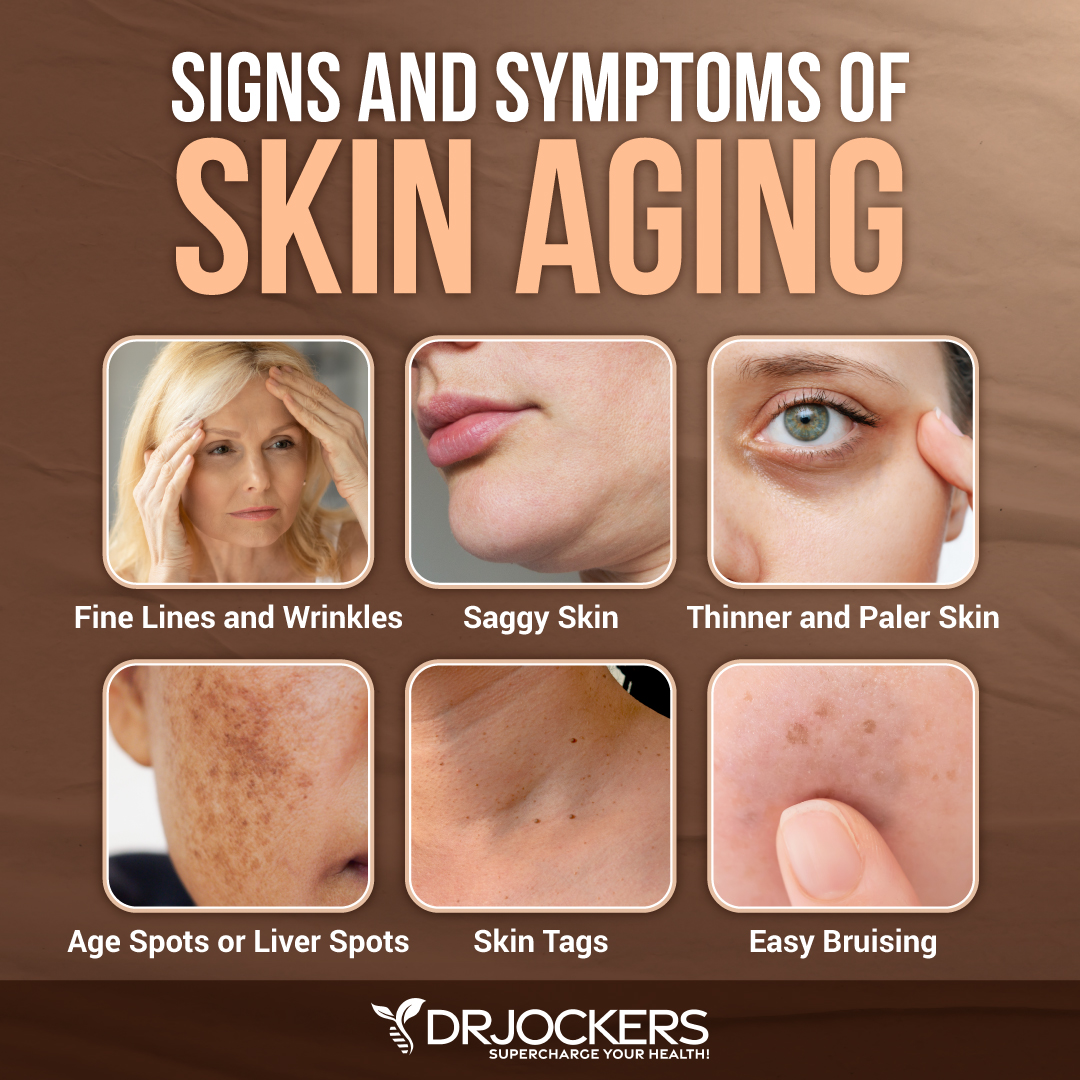
What is Loose, Saggy Skin
Having loose and saggy skin means that your skin has lost elasticity and it’s not as tight and firm as it once was. Collagen and elastin are both very important for skin health, texture, and firmness. The reduction or deterioration of elastin and collagen can cause saggy skin.
You may develop saggy skin in any area of your body. Common areas that may be affected by saggy skin include the stomach, upper arms, chins, jowls, eyelids, and throat.
Saggy skin is commonly seen as we age. Environmental toxin exposure, too much UV exposure, cigarette smoking, and other lifestyle factors may increase signs of skin aging, including saggy skin.
You may also develop saggy skin if you have lost a substantial amount of fat in a short time. If the weight loss is significant and/or very rapid, your skin may not be able to keep up and bounce back gradually as it would with gradual weight loss. We also see saggy skin after pregnancy for similar reasons.
Moreover, we may see saggy skin due to certain illnesses or medical conditions, such as Ehlers-Danlos Syndrome, which affects collagen tissue, or cutaneous T-cell lymphoma that causes glandular slackening of the skin.
Saggy skin from more complex health issues needs a more complex treatment. However, saggy skin due to aging, weight loss, and lifetime may be addressed with some simple dietary and lifestyle strategies targeting common root causes of saggy skin.
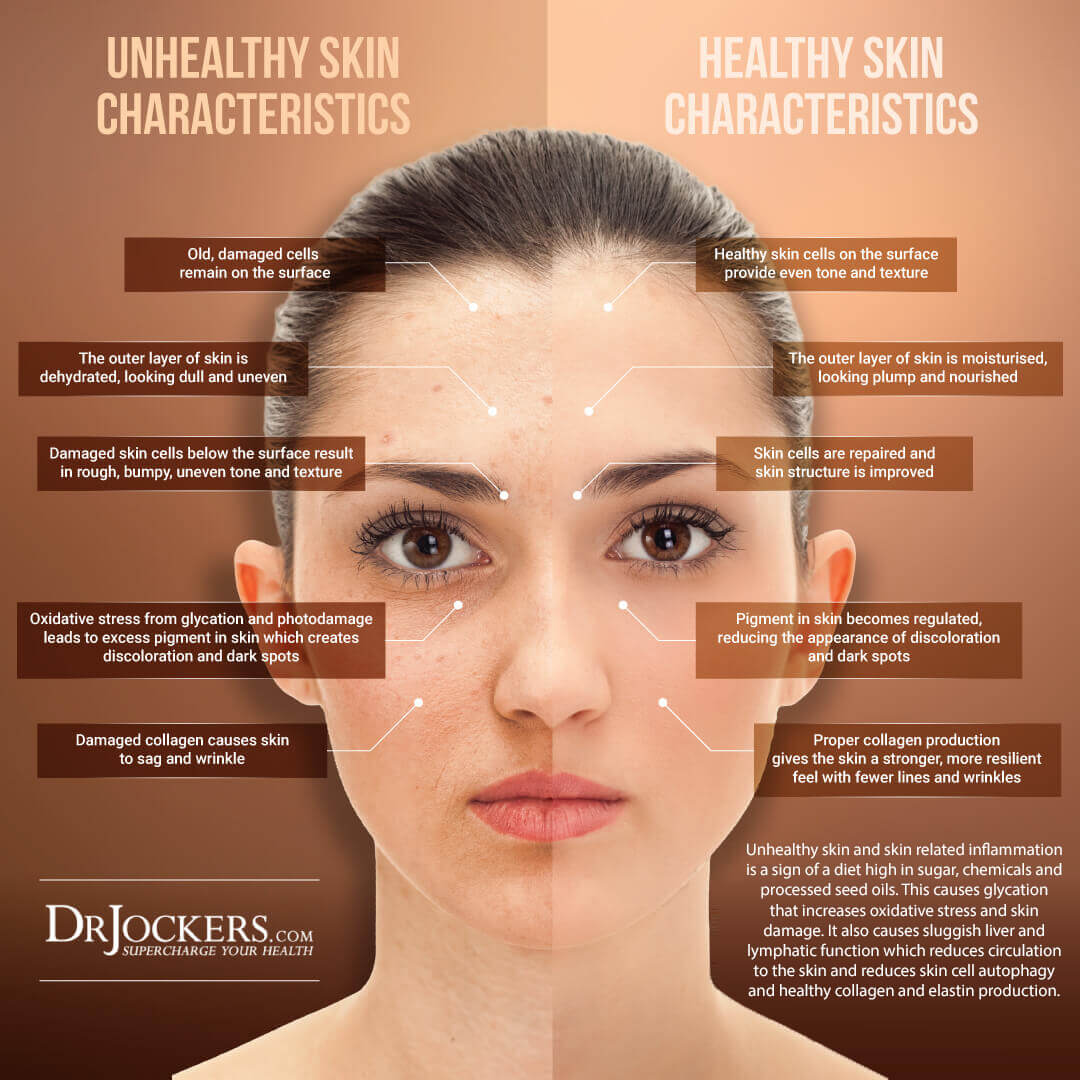
Root Causes of Saggy Skin
There are some common root causes that may increase the risk of or worsen saggy skin, including poor nutrition, impaired nutrient absorption, high blood sugar, insulin resistance, oxidative stress, inflammation, high stress hormones, and poor sex hormone and DHEA production.
You want to consider what root cause factors may be contributing to skin inflammation and aging. Let’s look at these common root causes of saggy skin one by one.

Poor Nutrition
Nutrition plays a critical role in your skin health. Thus, it may not be surprising that poor nutrition may increase the risk and appearance of saggy skin. Nutrient deficiencies related to poor nutrition may increase chronic skin inflammation and other skin issues.
For example, omega-3 fatty acids found in algae, fish, seafood, flaxseed, hemp seeds, chia seeds, and walnuts have anti-inflammatory effects. Low omega-3 fatty acid levels and high levels of inflammatory omega-6 fatty acid may increase skin inflammation and skin issues, including saggy skin.
Omega-3 fatty acids are anti-inflammatory fatty acids found in algae, fish, flaxseed, chia seeds, hemp seeds, and walnuts. Deficiencies in omega-3 fatty acids and an omega-3: omega-6 imbalance can result in skin inflammation. A 2020 study published in the Journal of Cutaneous Medicine and Surgery has also found that omega-3 fatty acids may benefit various dermatological conditions (15).

Key Nutrients for Skin Health
Vitamin A is also critical for skin health. It is a group of fat-soluble retinoids that are essential for your skin, eye, immune, and bone health, found in orange and yellow vegetables and fruits, cod liver oil, eggs, and dark leafy greens.
A 1996 study published in the Scandinavian Journal of Immunology has found that vitamin A deficiency can increase inflammatory processes, inflammatory reactions, and related health issues (16). This may increase saggy skin, signs of aging, and other skin issues.
Vitamin D is also essential for your skin, as well as your bones, muscles, brain, and immune health. You can get vitamin D from sunshine and certain foods, including fatty fish, egg yolks, and beef liver. It’s vital for muscle and bone health, immune health, brain function, and mental health.
It’s also important for your skin. According to a 2015 review published in the Indian Journal of Dermatology, Venereology, and Replorogy, vitamin D deficiency may play a role in various skin problems (18).

Zinc is a critical mineral for immune health and metabolism, as well as skin health. It is found in red meat, poultry, certain seafood, nuts and beans. It is essential for your immune health and metabolism but also plays an important role in your skin health.
According to a 2016 study published in Nihon Rinsho, zinc deficiency may play a role in the development of various skin diseases (20). It may increase the risk of saggy skin.
Finally, taking in enough collagen is critical for skin elasticity and health, and so is elastin. Collagen-rich foods include organ meat, bone broth, meat, poultry, and fish.
Elastin-containing foods include fatty fish, greens, almonds, and broccoli. According to 2022 research published in Dermatology Practical & Concept, collagen supplements may help with aging of the skin, which includes saggy skin (5). According to a 2023 review published in Frontiers in Nutrition, elastin and collagen in the diet are both critical for reducing skin aging (6).

Impaired Nutrient Absorption
Since normal nutrient levels are critical for skin health and reducing saggy skin, impaired nutrient absorption can increase your risks. You may develop impaired nutrient absorption due to a variety of factors, including leaky gut syndrome and low stomach acid levels.
Under normal circumstances, your semi-permeable gut lining lets nutrients pass into your bloodstream but stops pathogens and toxins. If you develop leaky gut due to a poor diet, stress, environmental toxins, and other factors, it means that the tiny holes on your gut lining become larger and allow undigested food particles, pathogens, and toxins to pass into your bloodstream.
This will increase the risk of chronic inflammation, gut microbiome imbalances, and chronic health issues. It will also impact nutrient absorption.
Moreover, not having enough stomach acid can impact the absorption of critical nutrients. According to 2020 research published in Integrative Medicine (Encinitas), low stomach acid may impact the absorption of iron, calcium, vitamin B12, folate, and vitamin B6 (7).
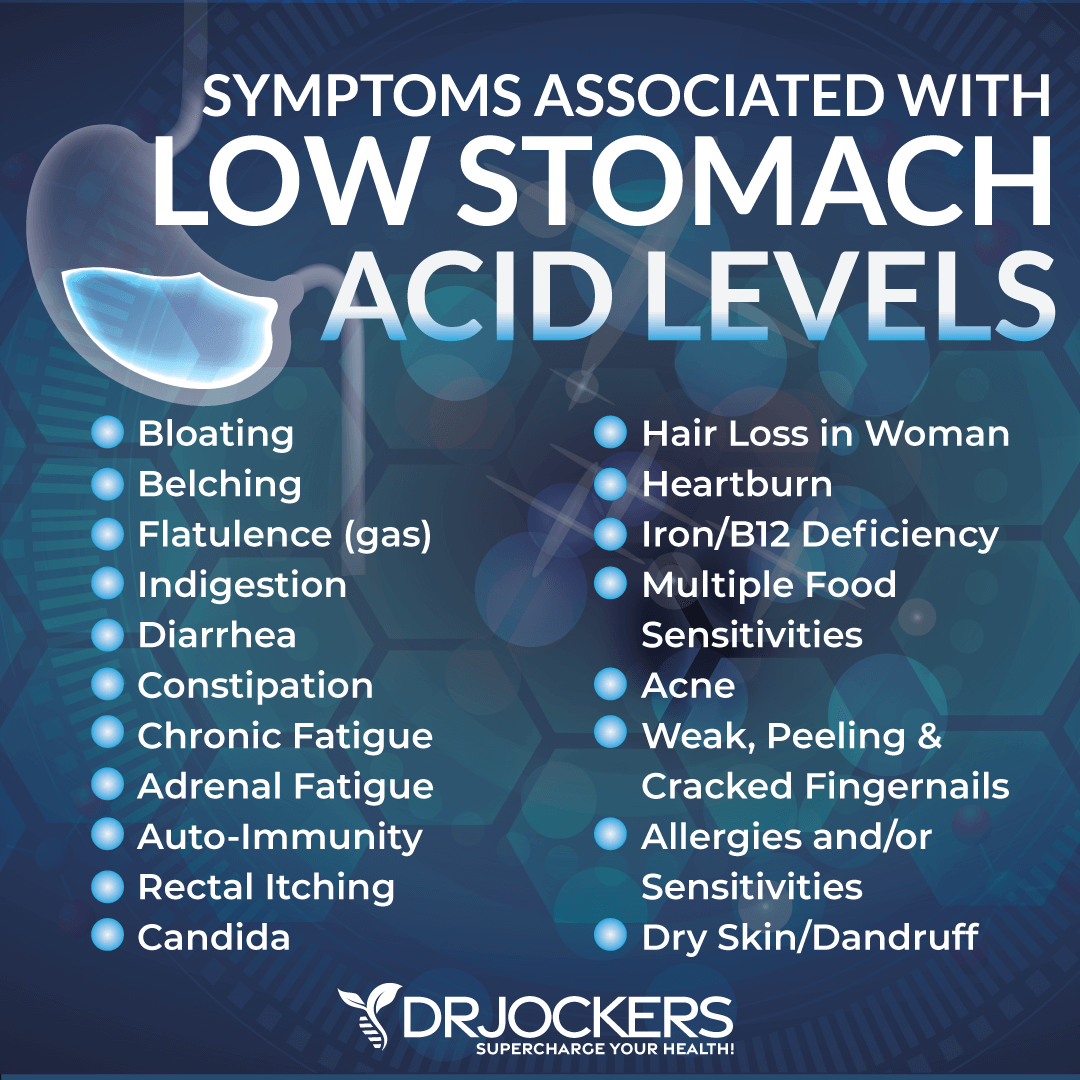
High Blood Sugar and Insulin Resistance
Normal blood sugar and insulin levels are critical for skin health. Insulin resistance means that your body doesn’t respond to insulin well and is unable to use the glucose from your body for your energy. Trying to keep up, your pancreas will start making more insulin.
This can lead to ongoing high blood sugar levels, blood sugar fluctuations, prediabetes, type 2 diabetes, and chronic health issues. It may also increase the risk of saggy skin.
If you have high blood sugar levels, molecules will bind to protein to create glycation end products (AGEs). AGEs can damage the skin and increase inflammation. According to a 2022 review published in Frontiers in Medicine (Lausanne), AGEs can impact the structure and composition of the skin (8).
According to a 2013 study published in Age, high blood sugar levels may also increase perceived age (9). Saggy skin may be a perceived sign of skin aging. High insulin levels can also increase chronic inflammation and skin inflammation.
It may also make it more difficult for your body to absorb the amino acids and nutrients needed for skin health. A 2015 study published in Hindawi has found that insulin resistance can increase chronic inflammation and contribute to various inflammation-related skin conditions (10).
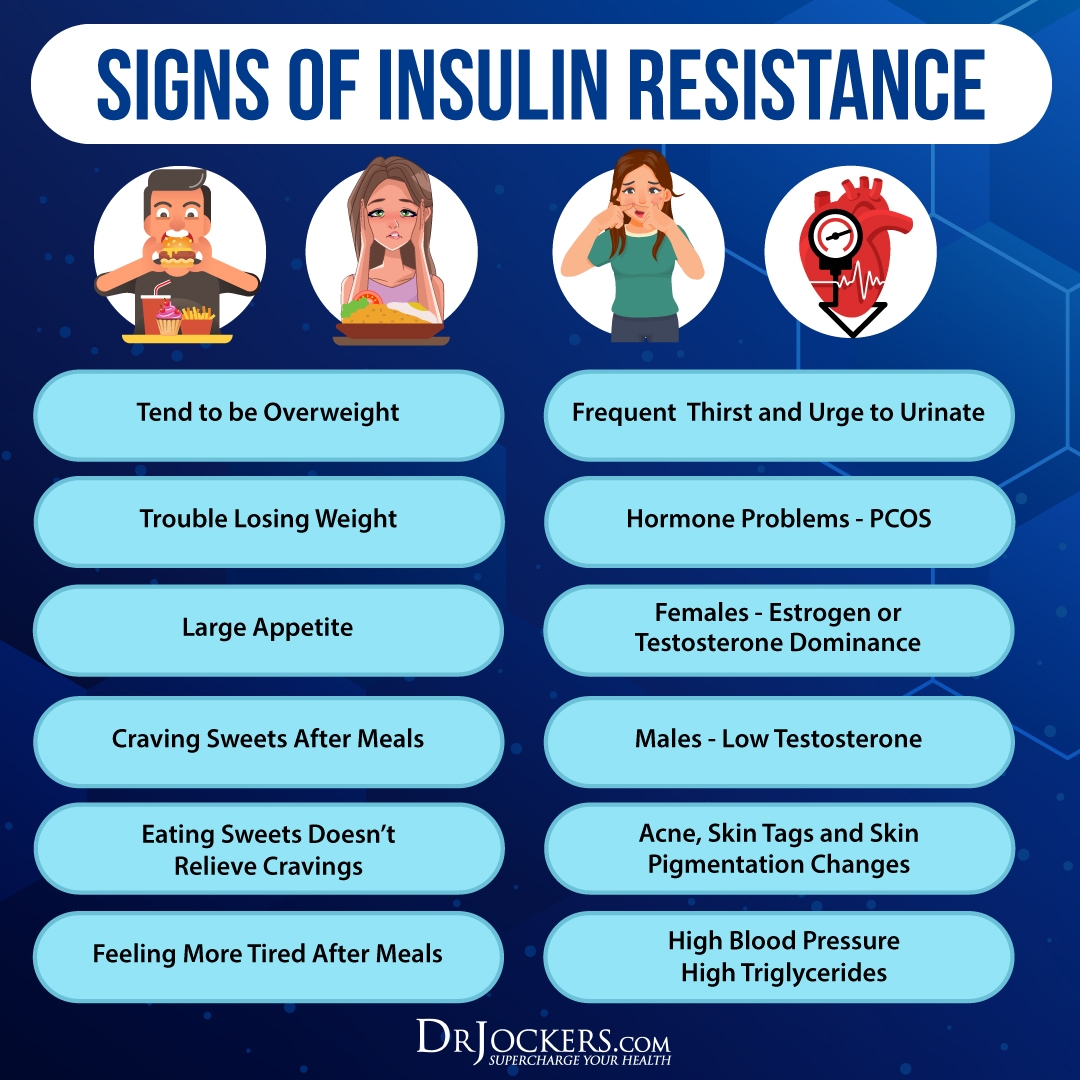
High Oxidative Stress & Inflammation
Oxidative stress means that there is an imbalance between the production and accumulation of oxygen-reactive species (ROS) in your body’s tissues and cells, and your body is unable to detoxify these products properly and rapidly enough. Oxidative stress increases the risk of chronic inflammation and chronic and inflammatory health issues.
Heavy oxidative stress includes smoking, too much sun exposure, pollution, certain medications, a poor diet high in inflammatory processed foods, heavy alcohol consumption, radiation, and exposure to chemicals, pesticides, and toxins are among the main causes of oxidative stress.
Oxidative stress can also increase chronic inflammation, which is the root cause of many health issues, including insulin resistance and leaky gut, which may contribute to saggy skin. Chronic inflammation may also increase skin problems, including saggy skin and early aging of the skin.
A 2005 review published in Current Drug Targets, Inflammation and Allergy has found that oxidative stress can result in inflammatory and allergic skin conditions (11). A 2014 study published in the Asian Pacific Journal of Cancer Prevention has also found that oxidative stress can result in chronic inflammation, collagen fragmentation, collagen fiber disorganization, and various skin diseases (12).
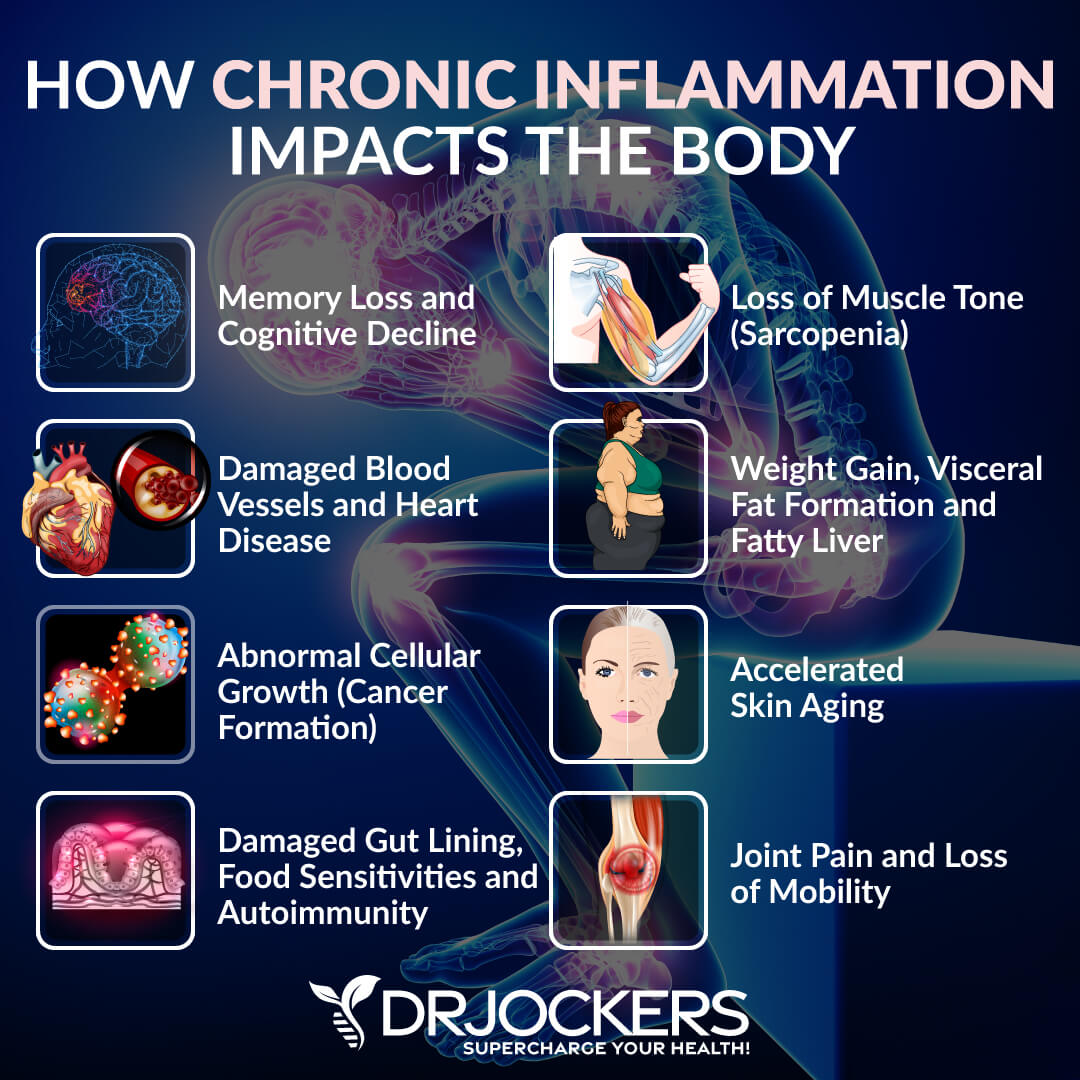
High Stress Hormones
High levels of stress hormones may also increase saggy skin. High cortisol levels from stress can increase your blood glucose levels, lead to the creation of more AGEs, and increase inflammation, which may all lead to saggy skin.
According to a 2017 study published in the Annals of New York Academy of Sciences, high cortisol and cortisol dysregulation may increase glycemia (13). According to 2014 research published in Inflammation and Allergy Drug Targets, stress may increase inflammation and skin aging (14). And saggy skin is one sign of aging of the skin and inflammation.
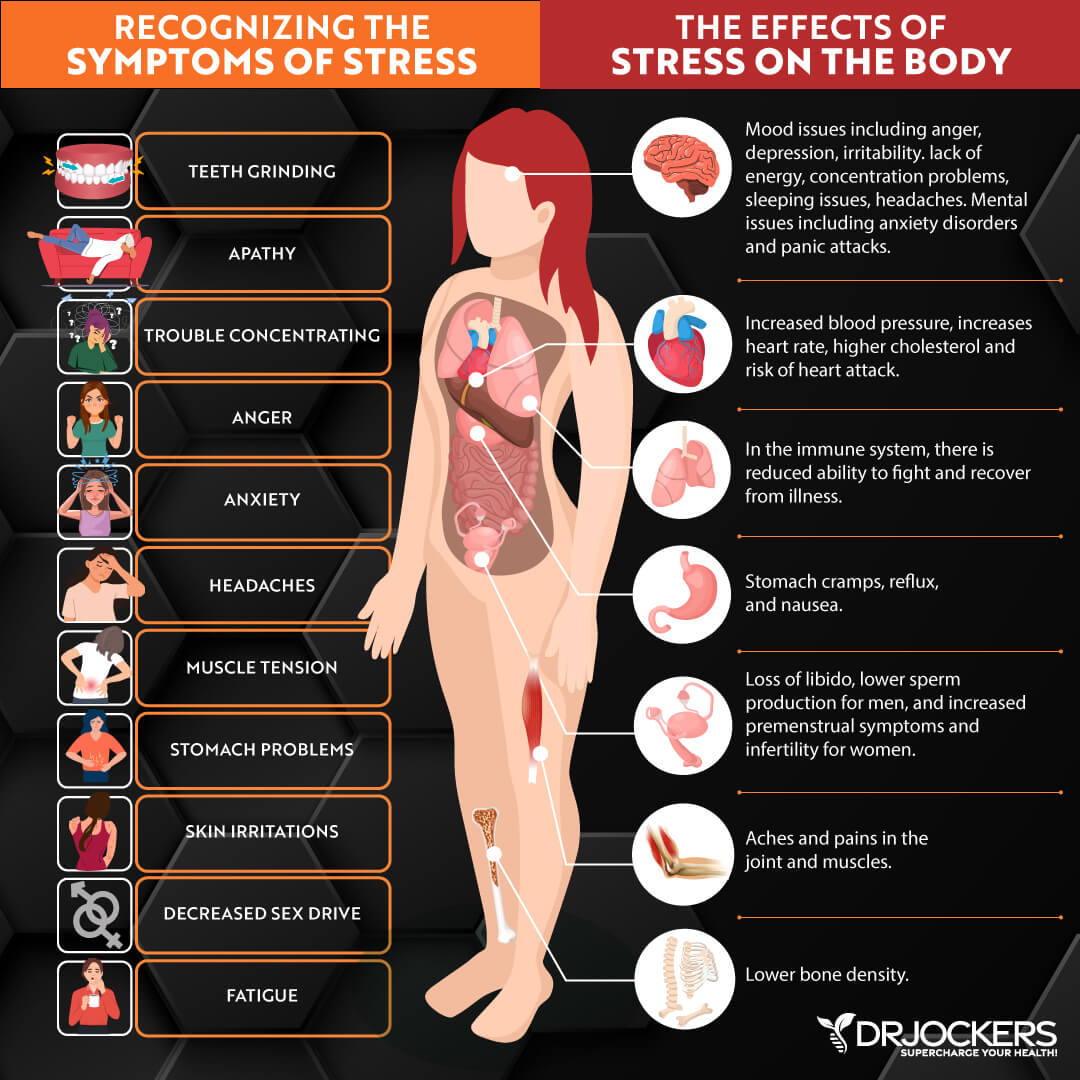
Poor Sex Hormone and DHEA Production
Hormonal imbalances, especially poor sex hormones and DHEA production, can also affect skin health, elasticity, structure, and composition. In women, for example, menopause may be a time when one experiences saggy skin or other skin issues. According to a 2014 study published in the Journal of Midwife Health, estrogen deficiency after menopause can cause a variety of skin conditions (15).
According to a 2008 study published in Mauritas, poor DHEA levels may increase signs of skin aging, but using topical DHEA may improve the aging of the skin, including saggy skin (16). A 2021 study published in the International Journal of Dermatology has also found that DHEA may help with skin thinning, aging of the skin, and saggy skin (17).
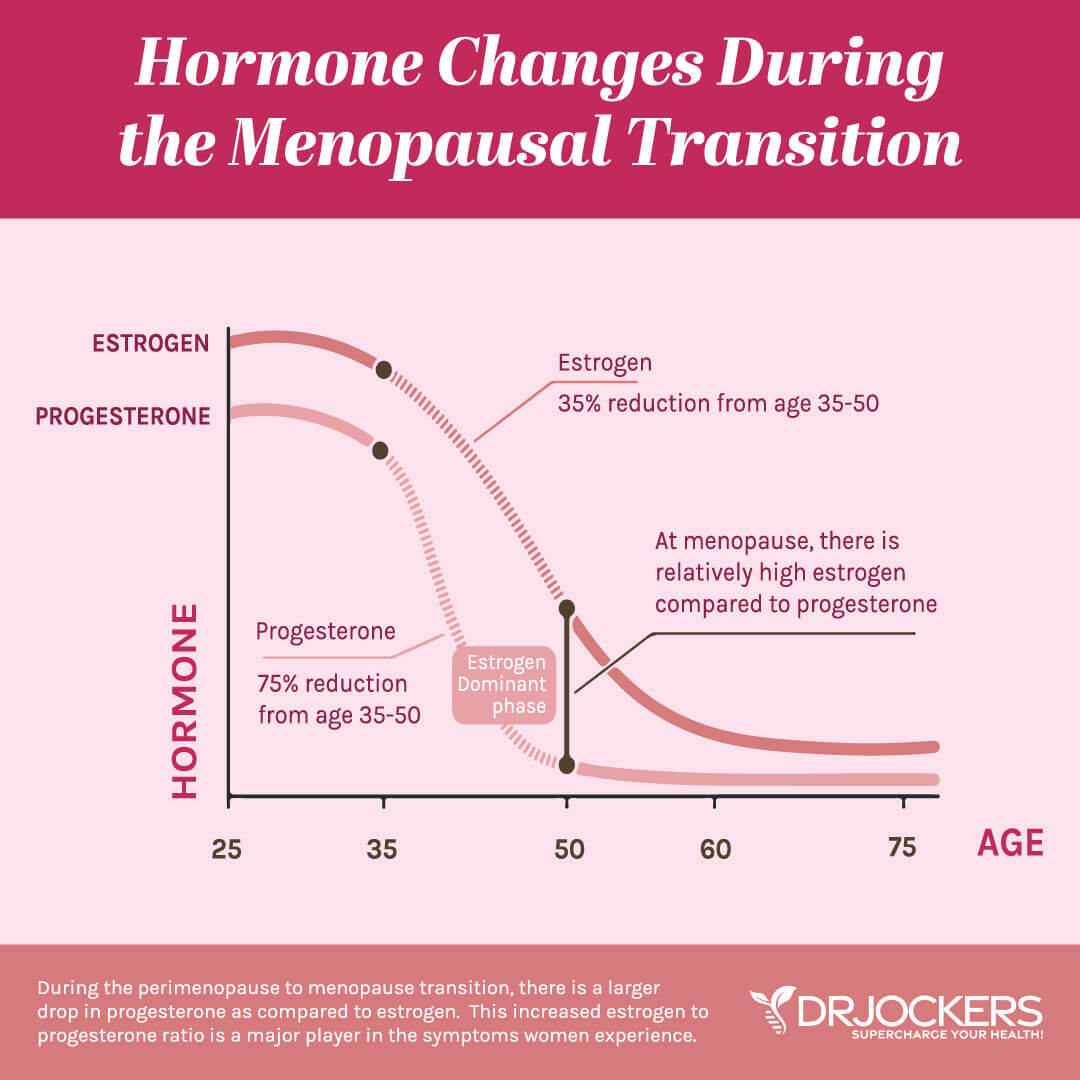
Natural Support Strategies
Fortunately, you can address these root cause factors to reduce your risk and appearance of saggy skin with some natural support strategies. Here is what I recommend:
Anti-Inflammatory Nutrition Plan
According to a 2012 study published in Dermato Endocrinology, a poor diet can lead to early aging of your skin (18). Following an anti-inflammatory nutrition plan is critical.
Remove inflammatory and skin-damaging foods, such as refined sugar, refined oils, deep-fried foods, additives, artificial ingredients, conventional dairy, gluten, junk food, and highly processed food.
Follow a diet rich in anti-inflammatory foods, including greens, vegetables, herbs, spices, low-glycemic index fruits, mushrooms, grass-fed beef, pasture-raised poultry and eggs, wild-caught fish and seafood, and wild game. Choose organic foods to reduce your exposure to pesticides, herbicides, toxins, hormones, and additives that may increase inflammation and damage your skin.
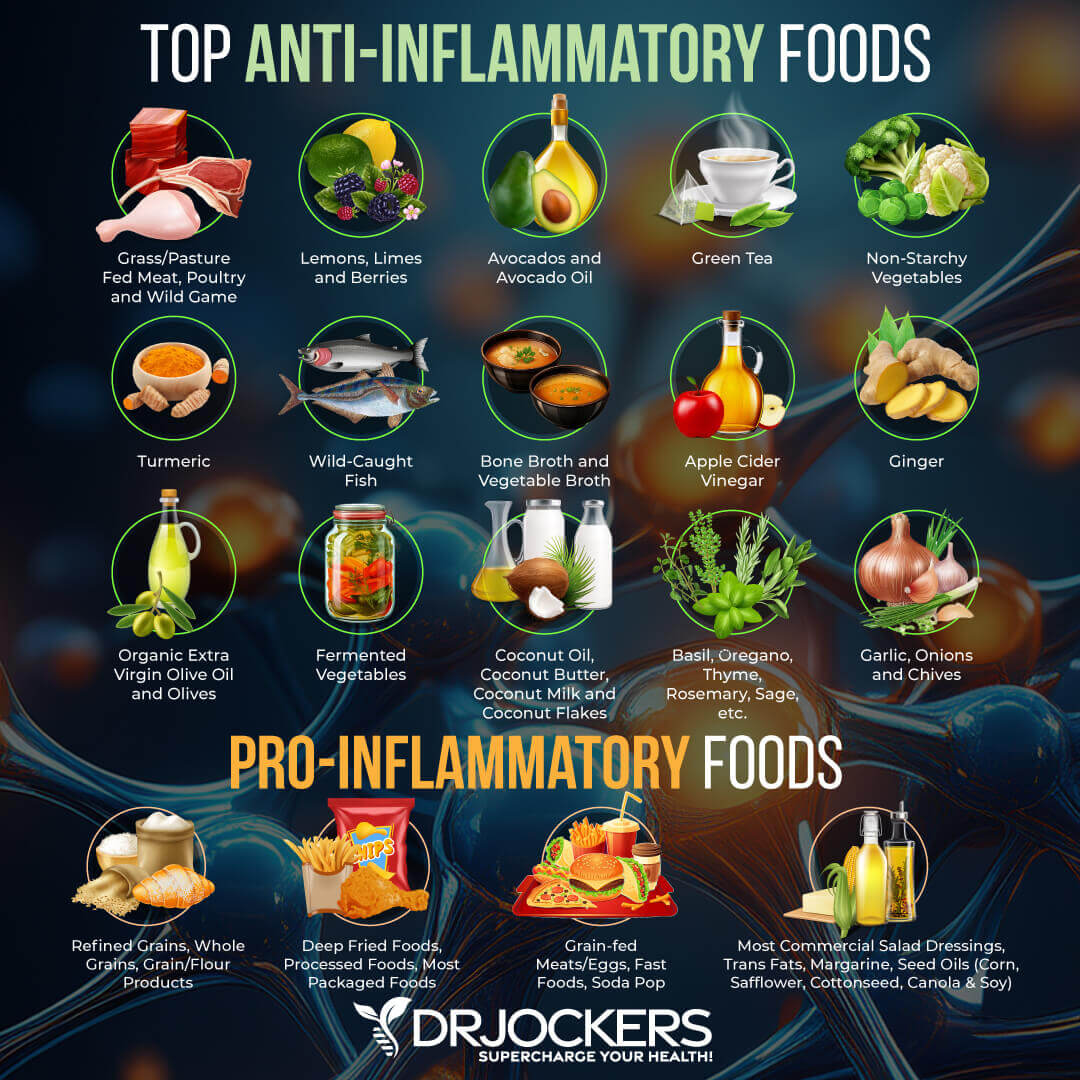
Consume Key Nutrients
Consume nutrients that are necessary for skin health, composition, and structure. Your body’s skin needs protein and amino acids. Consume quality animal protein, including grass-fed beef, organ meat, pasture-raised poultry, pasture-raised eggs, wild-caught fish and seafood, and wild game.
To improve your collagen intake, consume organic meat, bone broth, meat, poultry, and fish. You may also add a collagen peptides or bone broth protein powder. Elastin-containing foods you may add include fatty fish, greens, almonds, walnuts, citrus, and broccoli. You may also add silica-containing foods to create shinier skin and reduce wrinkles, such as alfalfa, beets, dandelion, tomatoes, peppers, celery, carrots, and cucumber.
Eat lots of healthy fats, such as good fats, such as avocados, coconut oil, grass-fed ghee or butter, olives, and extra virgin olive oil, and foods rich in omega-3 fatty acids, including wild-caught fish, flaxseeds, chia seeds, and hemp seeds. Add anti-inflammatory herbs and medicinal foods to your diet, including ginger, turmeric, cinnamon, chili, cayenne, and black pepper, rosemary, cloves, and raw honey.
Don’t forget about polyphenols and antioxidants. Foods rich in antioxidants and polyphenols include blueberries, strawberries, blackberries, raspberries, cacao, walnuts, pecan, kale, and artichokes. You can learn more about an anti-inflammatory diet to support your skin health here.

Boost Growth Hormone and Improve Vascularization
Boosting your growth hormone levels and improving vascularization is critical for skin health. Growth hormone is actually the quintessential anti-aging hormone. It helps to improve skin health, collagen levels, elastin production, immune health, and lean body tissue development.
Exercise, strength training in particular is critical for boosting growth hormone levels and improving vascularization. A 2021 article published in Frontiers in Physiology has found that exercise may help to improve growth hormone levels in the vascular adipose tissue (19).
High-intensity interval training (HIIT) is also very beneficial. It helps the capillary beds to branch out and deliver more oxygen to your tissues effectively, which may help to improve skin health. It may also help to reduce inflammation and oxidative stress that can cause saggy skin.
A 2013 study published in the Journal of Clinical & Diagnostic Research has found that exercise can decrease insulin resistance, inflammation, and oxidative stress (20). A 2015 study published in Aging Cell has found that exercise can improve skin metabolism, support skin structure, and reduce signs of skin aging (21).
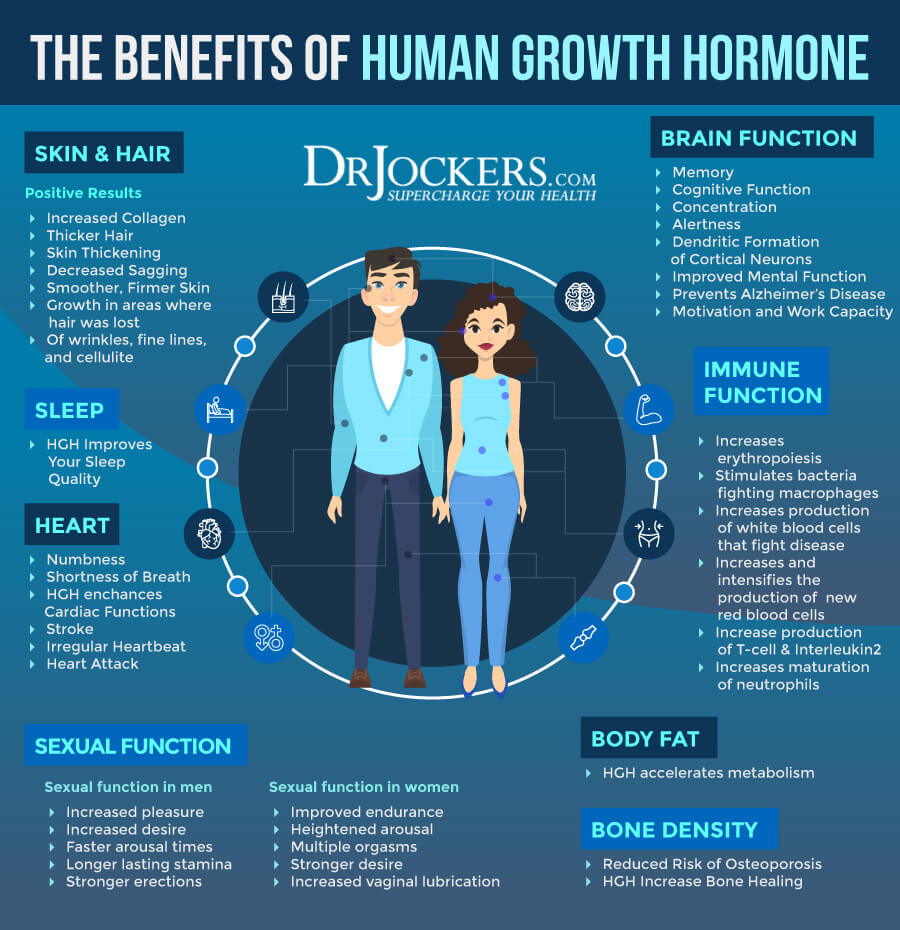
Nutrition Strategies for Growth Hormone Optimization
Keeping your carbohydrate levels low at under 100 grams a day is critical. This can also help to keep your blood sugar and insulin levels stable to reduce high blood sugar-related saggy skin. A 2021 study published in Current Opinions in Endocrinology, Diabetes, and Obesity has found that low carbohydrate diets may help to improve insulin resistance which may contribute to saggy skin (22). Choose colorful veggies and fruits for your carb intake instead of processed food with refined sugar.
Moreover, intermittent fasting may also help to activate growth hormone production and autophagy. Intermittent fasting is a form of fasting. It cycles between a period of eating and not eating within one day. You are basically fasting for a part of a day only but do that every day or several days a week on a regular basis.
Intermittent fasting is a great way to improve your health. A 2014 study published in the International Journal of Health Sciences (Qassim) has found that intermittent fasting can decrease inflammation, reduce insulin resistance, lower the risk of disease, and improve overall health (23).

How to Practice Intermittent Fasting:
A great way to start with intermittent fasting is a Simple Fast. The Simple Fast only involves a 12-hour fast, including your overnight sleep. All you have to do is stop eating after dinner and don’t eat until 12 hours later at breakfast.
Extend your fasting window gradually. Most people find that they feel the best using the 16:8 approach, with 16 hours of fasting and 8 hours reserved for eating. Listen to your body to find the ideal eating window for you.
Intermittent fasting is not about caloric restriction or nutrient deprivation. Make sure to eat anti-inflammatory, nutrient-dense foods and meet your caloric needs during your eating window. Drink plenty of clean, purified water during your fasting period. Herbal tea is also allowed. You may learn more about intermittent fasting by reading this article.
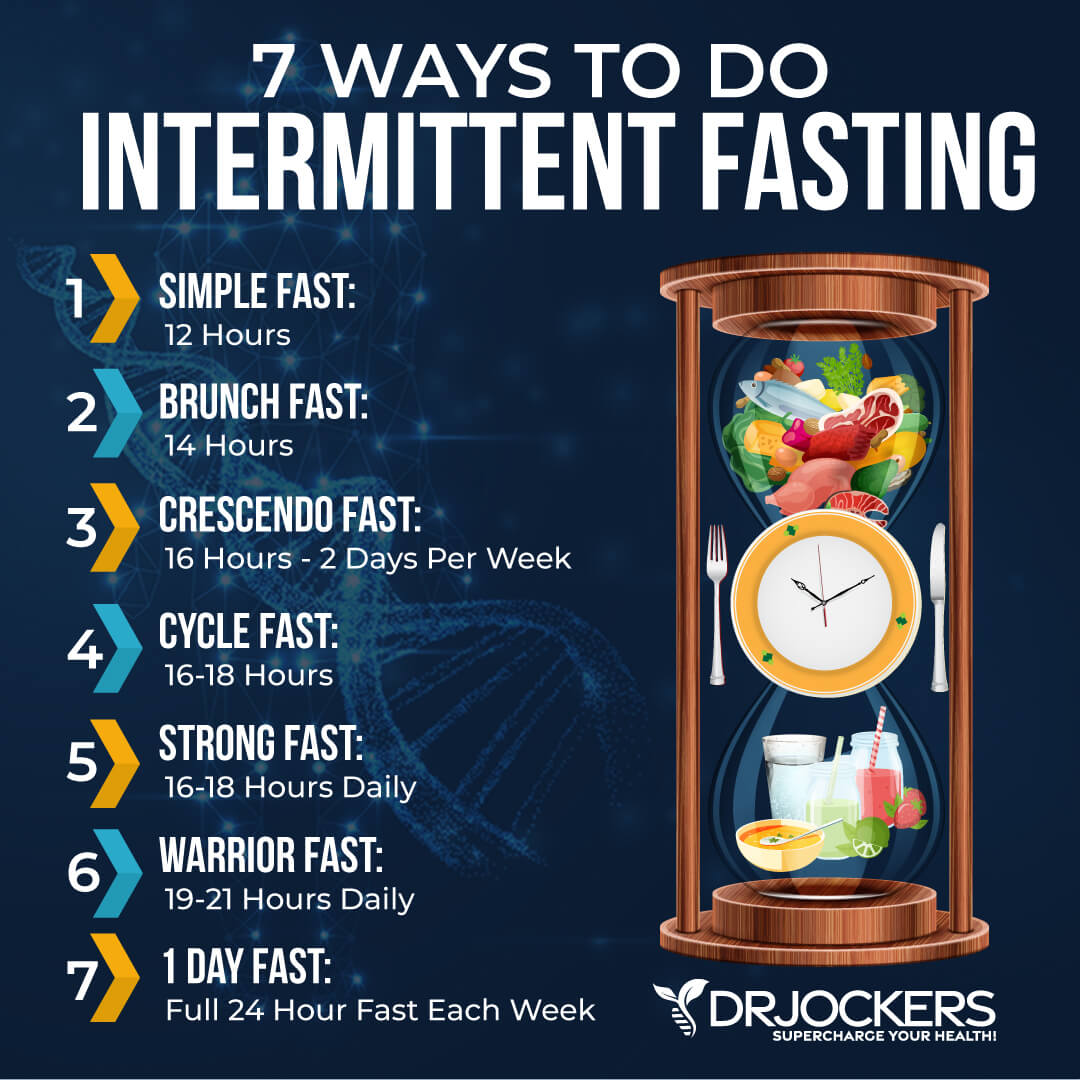
Prioritizing Good Sleep to Optimize Growth Hormone
Finally, prioritizing sleep is essential for boosting growth hormones, reducing inflammation, and keeping your skin healthy. A 2015 study published in Clinical Experiments in Dermatology has found that poor sleep can also contribute to accelerated skin aging (24). Go to sleep by 10 pm and get 7 to 8 hours of sleep.
Keep blue light exposure low in the evening. Try relaxing activities, such as taking a healing bath, coloring, arts and crafts, reading poetry or fiction, board games, and journaling instead. Support your sleep with the help of calming essential oils, such as lavender or chamomile, a supportive and comfortable mattress, bedding and pillows, light-blocking curtains, and using blue light blocking glasses and an eye mask.

Proper Light Exposure
Daily sunlight exposure may also help to improve your skin health. As you know from earlier, low vitamin D levels may increase the risk of skin problems and accelerated aging (18). Light exposure during sunlight can also support your energy levels and sleep and lower inflammation. At night, make sure your home is dark and use blue light-blocking glasses after sunset.
Additionally, I recommend using red and infrared light exposure from red light therapy and infrared sauna therapy for additional skin health benefits. These methods may help to improve autophagy, reduce inflammation, lower oxidative stress, improve detoxification, and enhance skin health.

Red Light and Infrared Exposure
Red light therapy (RLT) is a powerful therapeutic technique using low-level red wavelengths of light used for skin rejuvenation, anti-aging, inflammation, pain, and other health concerns. According to a 2013 study published in the Seminars in Cutaneous Medicine and Surgery, low-level laser red light therapy may offer therapeutic benefits for the skin, including reducing pain and inflammation, tissue repair and healing, scarring, acne, burns, and wrinkles (25).
A 2014 study published in Photomedicine and Laser Surgery has found that red light may improve collagen production and increase intradermal collagen density (26). 2014 review published in Anais Brasilienos de Dermatologica has found that red light therapy may stimulate new blood vessel growth, reduce inflammation, aid collagen production, and support fibroblast production (27).
Infrared sauna therapy is a form of sauna that uses infrared heaters that release infrared lights you experience as heat as it gets absorbed through the surface of the skin. The infrared wavelengths of infrared sauna therapy are able to stimulate multiple pathways throughout the body.
They help to improve the immune system, kill pathogenic organisms, support metabolic pathways, stimulate metabolism, support liver detoxification, optimize kidney filtration, aid elimination, reduce stress, decrease signs of aging, and enhance healthy weight loss.
According to a 2007 research published in the International Journal of Hypothermia, it may help to improve insulin resistance, an underlying factor behind saggy skin (28). According to a 2006 study published in Dose Response, mild heat stress and hormetic modulation may help to improve autophagy and longevity (29).
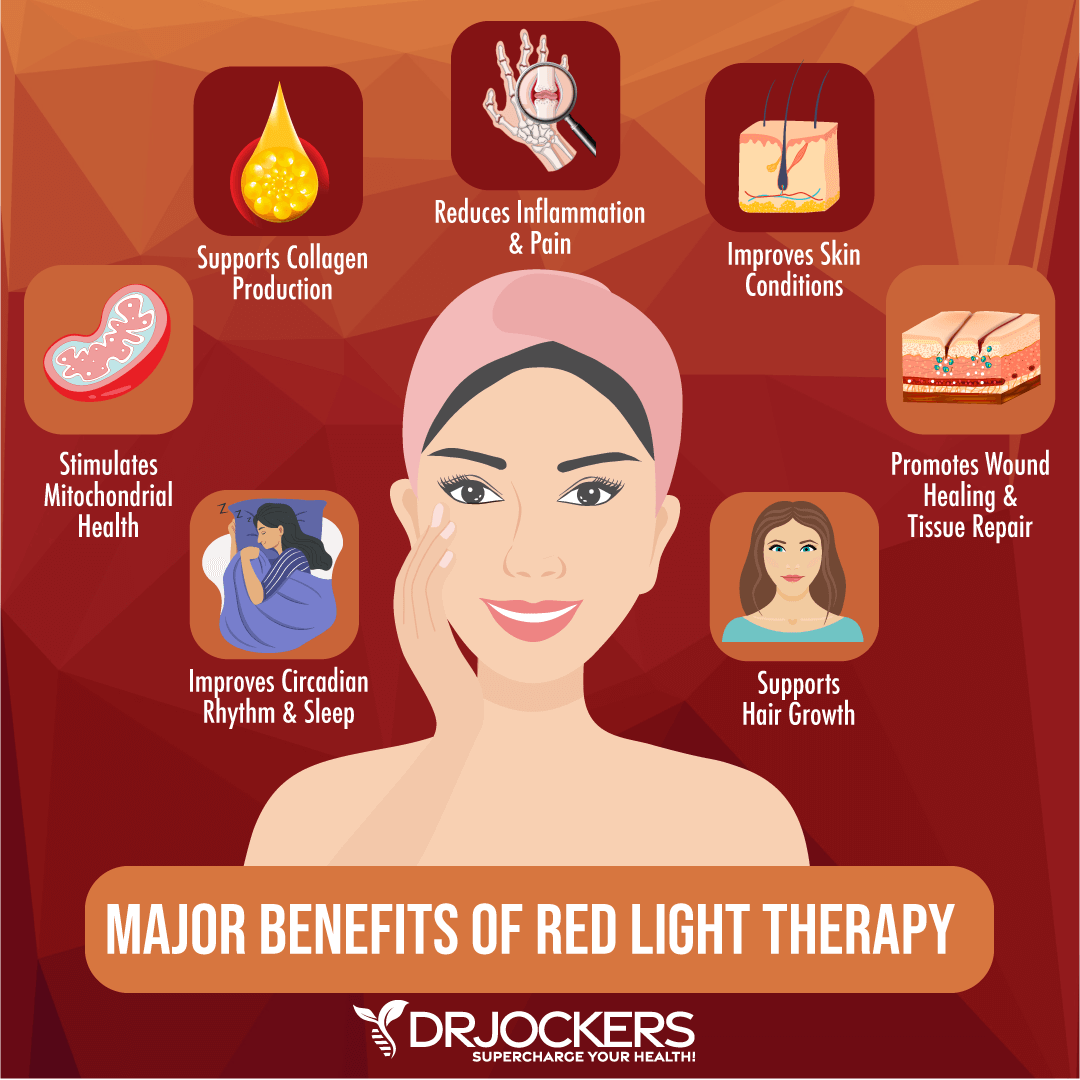
Autophagy Stimulation
Autophagy stimulation is critical for reducing saggy skin. Autophagy helps to break down damaged and old cells, leaving room for the resting and new and healthy ones. Strategies that may help to improve autophagy include exercise, daily intermittent fasting, and deeper fasting, such as 3 to 5-day water or partial fasts.
I have already talked about the importance of exercise. Move your body regularly and exercise 20 to 30 minutes 5 days a week. Prioritize strength and resistance training and HIIT workouts.
According to a 2018 study published in Clinics (Sao Paulo), intermittent fasting and fasting can improve autophagy or cellular renewal (30). These benefits may impact your skin health as well. I have already covered intermittent fasting in the earlier section. Let’s look at partial and water fasting now.

A partial fast is a way to practice extended fasting without completely depriving yourself of nutrition. One of the most popular partial fasting strategies is liquid fasting, including Juice Fasting and Bone Broth Fasting, during which you will be drinking green juices or bone broth, respectively.
Another common partial fasting strategy is The Fasting Mimicking Diet®, or FMD®, a 5-day particle fasting plan high in nutrients, low in protein, and low in carbohydrates.
Finally, two other popular partial fasting methods include the Fast or Keto Fast and the Daniel Fast. Fat or Keto Fasting works by raising the ketone levels in your blood and pushing your body into ketosis, reducing inflammation, improving autophagy, and enhancing your health.
The Daniel Fast is a vegetarian fast based on Biblical principles. You can learn more about partial fasting from this article.
Additionally, using some compounds, such as resveratrol and turmeric may also help to improve autophagy and skin health. Resveratrol is found in the skin of grapes and berries, and curcumin is the active compound of turmeric. A 2012 study published in the Archives of Biochemistry and Physiology, antioxidants from grape resveratrol can benefit the outcome of various skin disorders (31).
It may reduce oxidative stress, UV damage, and accelerated aging. A 2015 study published in Cell Death Discovery has found that curcumin may cause ER stress, which can result in the activation of autophagy (32).

Thermo Hormetic Stress
Finally, improving thermo hormetic stress may also help to reduce saggy skin. Exercise is a hormetic stressor. This means that it stresses your body, but as your body recovers with rest and the right nutrients, it will become stronger.
Hot and cold exposure may also offer similar benefits and make your body stronger and more resilient. It can also lower oxidative stress and inflammation, which both play a role in saggy skin.
A 2006 study published in Dose Response has found that mild heat stress and hormetic modulation it may help to improve autophagy and longevity (29).
For hot exposure, I recommend using an infrared sauna. For cold exposure, you may try cold plunges or cold showers. Alternating between the two can be very beneficial as well. You may finish your sauna session with a cold plunge or cold shower.
Or you may alternate between hot and cold water when taking a shower, finishing off with cold water. If you are not used to cold showers, start easy. You can start with just 20 or even 10 seconds the first time, increasing the time each day. Eventually, you will be able to take it for 2 to even 5 minutes or even take a full shower with cold water.

Top Supplements for Skin Health
Finally, here are the top supplements I recommend for skin health.
Essential Amino Acids
To improve your skin health and saggy skin with essential amino acids, I recommend Amino Strong. This supplement represents a breakthrough in the use of amino acids for muscle protein synthesis.
Over 20 human trials have been conducted to arrive at this specific, patent-pending combination of amino acids in the most effective anabolic ratios. It helps to protect your skin from UV damage, repair tissue damage, promote healing, support collagen production, condition the skin, support the formation of cell membranes, and prevent muscle protein breakdown.
Collagen Peptides
To improve your collagen levels, I recommend Multi-Collagen Pro or CollagenMax. Multi Collagen Protein is made from four real food ingredients— hydrolyzed bovine hide collagen peptides, eggshell membrane collagen, hydrolyzed fish collagen peptides, and chicken bone broth protein concentrate. Together, they offer five types of collagen—Types I, II, III, V, and X.
Collagen peptides are a great functional food that is easy to digest and absorb and support our joints, hair, nails, and intestinal lining. CollogenMax provides ch-OSA® (choline-stabilized orthosilicic acid), that helps naturally nourish your body’s beauty proteins.
Regular orthosilicic acid is highly unstable, leading it to form polymers. These polymers are too large for the human body to absorb. But the patented “choline stabilization” technology in CallagenMax prevents the polymers from forming, ensuring optimal absorption.
CollagenMax has been formulated with clinically proven ch-OSA for your assurance. The collagen supplements may help to reduce saggy skin, fine lines, and wrinkles, and they may help with stronger hair, healthier nails, stronger bones, and better skin.
Omega 3 Fatty Acids
To reduce inflammation with omega-3 fatty acids, I recommend Pro Omega Curcumin. ProOmega® Curcumin (previously ProOmega CRP) offers a powerful new solution for systemic cellular stress. This unique formulation combines concentrated omega-3s plus optimized curcumin and the potent antioxidants L-Glutathione and N-Acetylcysteine (NAC) to achieve complete functional support for long-term health.
This combination of nutrients synergizes to impact all the major inflammatory pathways while strengthening both the inside cellular mechanics and the outer cell membrane. The omega 3’s and curcumin help to reduce inflammation on the outer cell membrane. The L-glutathione and N-acetyl cysteine help to balance the immune system and protect the mitochondria and DNA.
Each nutrient plays a unique and yet complementary role in promoting a balanced immunological response by supporting optimal cell function. Together, these nutrients work within cells, tissues, and organs to improve antioxidant status, normalize metabolic activity, and fine-tune the critical cell signals.
Additionally, they help to strengthen the body’s detoxification capabilities. They may help to reduce inflammation-related skin health issues and signs of early aging, including saggy skin.
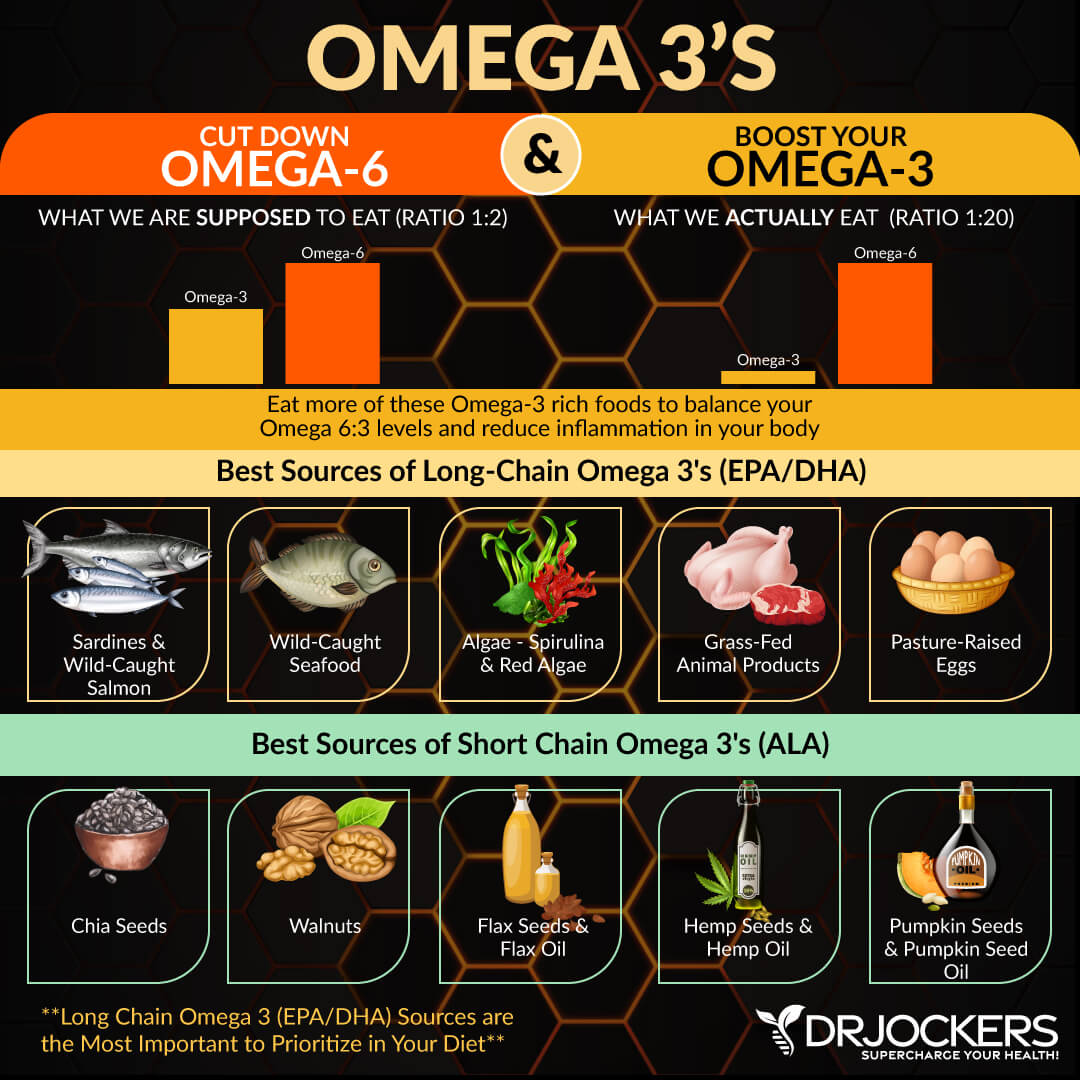
Turmeric/Curcumin
To reduce inflammation with curcumin, I recommend Pro Omega Curcumin or Organic Turmeric. Turmeric has a serious track record: It’s been traditionally used for over 4000 years to support healthy joints. It’s packed with an antioxidant called curcumin (which gives it that bright orange color).
We’ve taken high-quality organic turmeric root extract, which is typically more concentrated than just the herb itself, and combined it with fermented turmeric. Together, this is a powerful blend that’s easy for your body to absorb and use. It may help to reduce inflammation-related saggy skin, skin issues, and early signs of aging and improve other inflammation-related symptoms and pain.
Zinc, Vitamin D & Selenium
To improve certain vitamin deficiencies linked to saggy skin, skin issues, and inflammation, I recommend Immunocharge. This supplement contains zinc, vitamin D, and selenium which is critical for skin health, keeping inflammation low, and supporting your immune system. ImmunoCharge is specifically designed to provide you with optimal dosages of these key immune-modulating nutrients and compounds.
The synergy of these key nutrients and compounds strengthens immune function and improves the process of inflammation. Each ImmunoCharge capsule contains the same amount of powerful immune-modulating compounds.
These include quercetin, resveratrol, vitamin D, vitamin A, selenium, zinc, vitamin C, N-acetyl cysteine, vitamin K2, and magnesium. These ingredients support the body’s natural immune mechanism to help maintain good health. Rather than taking multiple different supplements to get these key nutrients, you can get the clinical dosages within 4 capsules daily of ImmunoCharge.
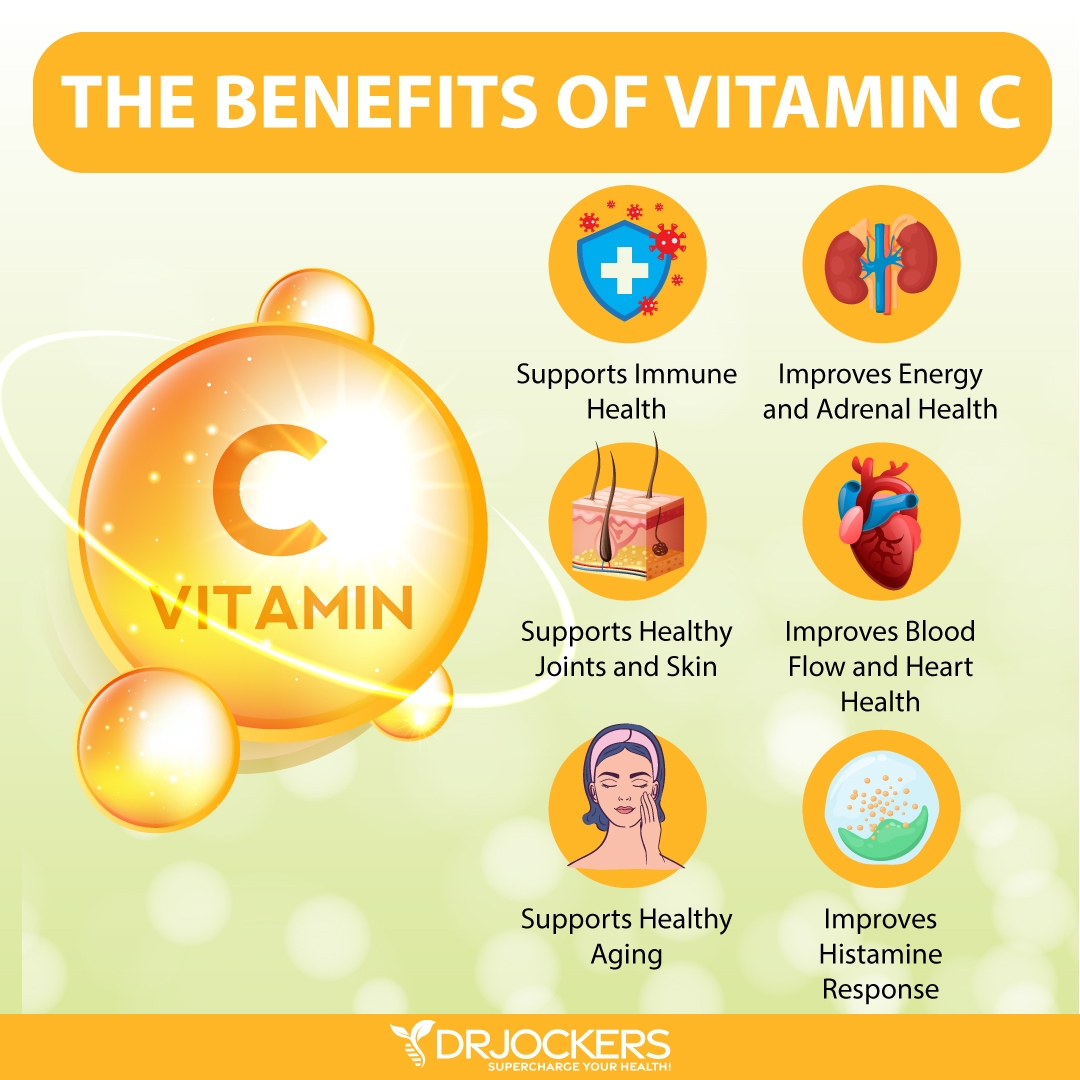
Vitamin C, Resveratrol & Bioflavonoids
To improve saggy skin with vitamin C, resveratrol, and bioflavonoids, I recommend Immunocharge. This supplement contains vitamin C, resveratrol, and bioflavonoids that are critical for skin health, keeping inflammation low, and supporting your immune system.
All ingredients work together to support your immune system, reduce inflammation, and keep you healthy and energized. Take 2 capsules, 2 times a day with meals for appropriate immune, anti-inflammatory and skin health support.
***Special Offer: Save 30% on Immunocharge with the coupon code Immune30 at checkout!
Proper Skin Care
When it comes to your skin health, you cannot forget about proper skin care. Natural skin care is not difficult. All you have to do is to pay attention to the few simple tips below.
What to Avoid to Rejuvenate Your Skin:
- Long, hot showers
- Soap-free cleansing bars
- Anything with alcohol and perfumes
- Lanolin-based creams, lotions, ointments, etc.
- Avoid traditional lotions that are full of toxic ingredients.
What to Do to Rejuvenate Your Skin
- Eat a nutrient-dense diet and drink plenty of fluids to stay hydrated. Avoid alcohol, sugary drinks, and sodas. Drink 2 to 3 quarts of water daily. You can add lemon or lime as well. You may also add herbal tea or green juice to your routine.
- Keep your home cool and humid to avoid dry skin reactions. Wear gloves in cold weather, and sunblock and protective clothing in hot weather.
- Wear cotton clothes whenever possible. Use natural, mild detergents.
- If you notice a rash after shaving, do not shave until its completely healed. Avoid perfumed after-shave.
- Start loving moisturizers. Natural moisturizers can prevent water loss by layering an oily substance over the skin to keep the water in or by attracting water to the outer layer from the inner layer of your skin. I recommend Purity Woods Age Defying Dream Cream which uses organic ingredients that help to soothe the skin and activate skin autophagy and moisturization.
Purity Woods Age-Defying Dream Cream
Healthy, radiant looking skin is certainly a confidence booster. It is a goal that everyone tries to achieve (and keep) throughout their lives. As we begin to get older, there are millions of tricks, tips and procedures out there to maintain the same healthy-looking skin we had when we were younger.
That’s why I would like to share my top choice for keeping skin looking young and healthy – the USDA Certified Organic Age-Defying Dream Cream from Purity Woods.
This anti-aging cream is truly a game changer when it comes to achieving and KEEPING your skin looking and feeling spectacular. Now you can save up to 38% on this amazing product, simply click here to learn more!
Final Thoughts on Saggy Skin
Saggy skin is a common issue many people experience from aging, weight loss, pregnancy, and other factors. I recommend that you follow my tips in this article to reduce your risk and the appearance of saggy with good nutrition, lifestyle strategies, and supplementation. I also recommend watching my video on this topic.
If you want to work with a functional health coach, I recommend this article with tips on how to find a great coach. Our website offers long-distance functional health coaching programs. For further support with your health goals, just reach out and our fantastic coaches are here to support your journey.
Inflammation Crushing Ebundle
The Inflammation Crushing Ebundle is designed to help you improve your brain, liver, immune system and discover the healing strategies, foods and recipes to burn fat, reduce inflammation and Thrive in Life!
As a doctor of natural medicine, I have spent the past 20 years studying the best healing strategies and worked with hundreds of coaching clients, helping them overcome chronic health conditions and optimize their overall health.
In our Inflammation Crushing Ebundle, I have put together my very best strategies to reduce inflammation and optimize your healing potential. Take a look at what you will get inside these valuable guides below!



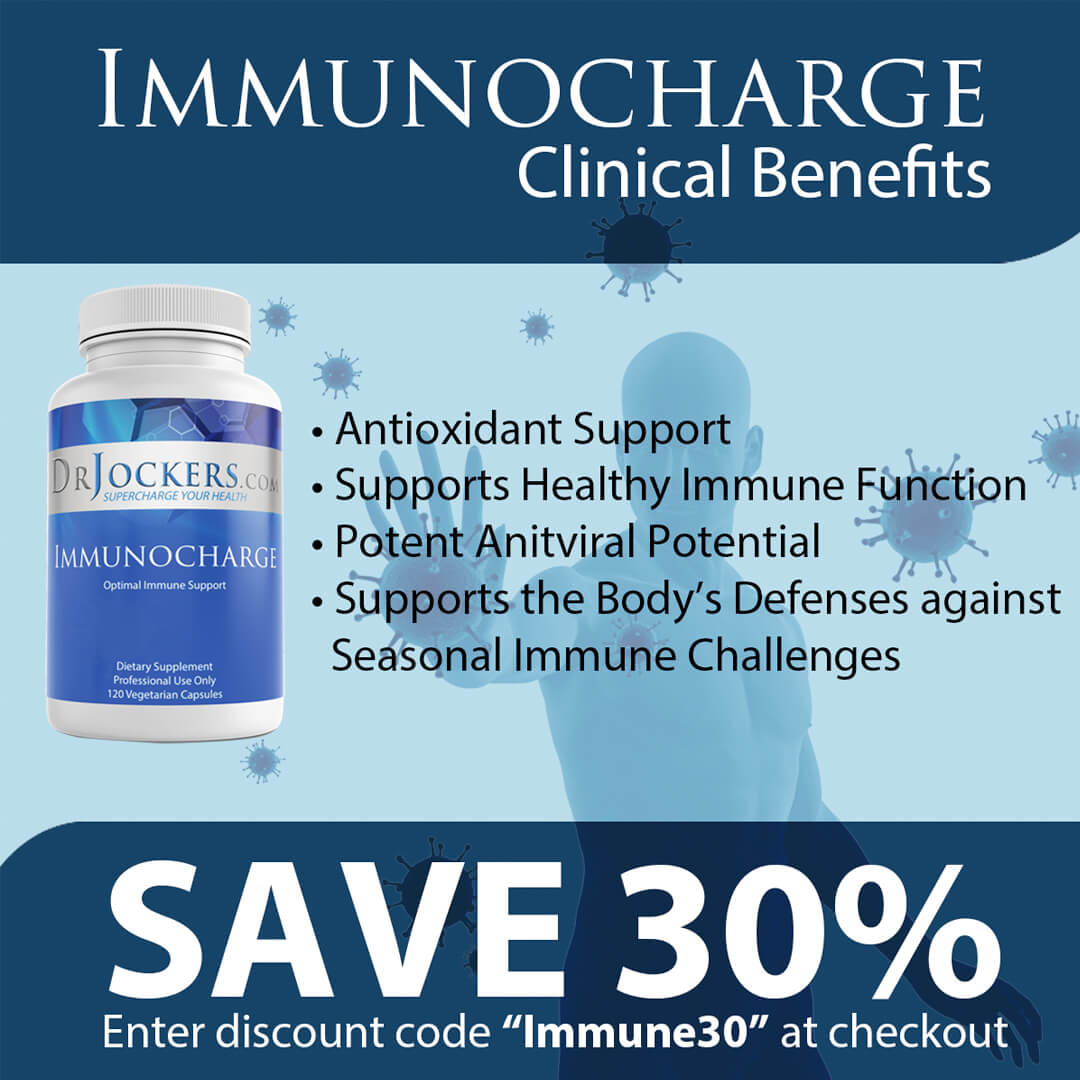
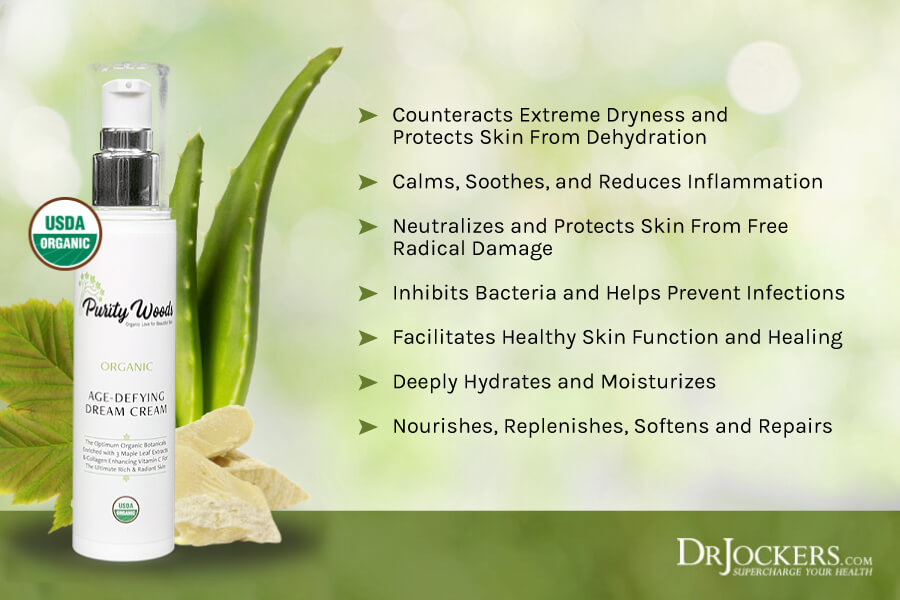
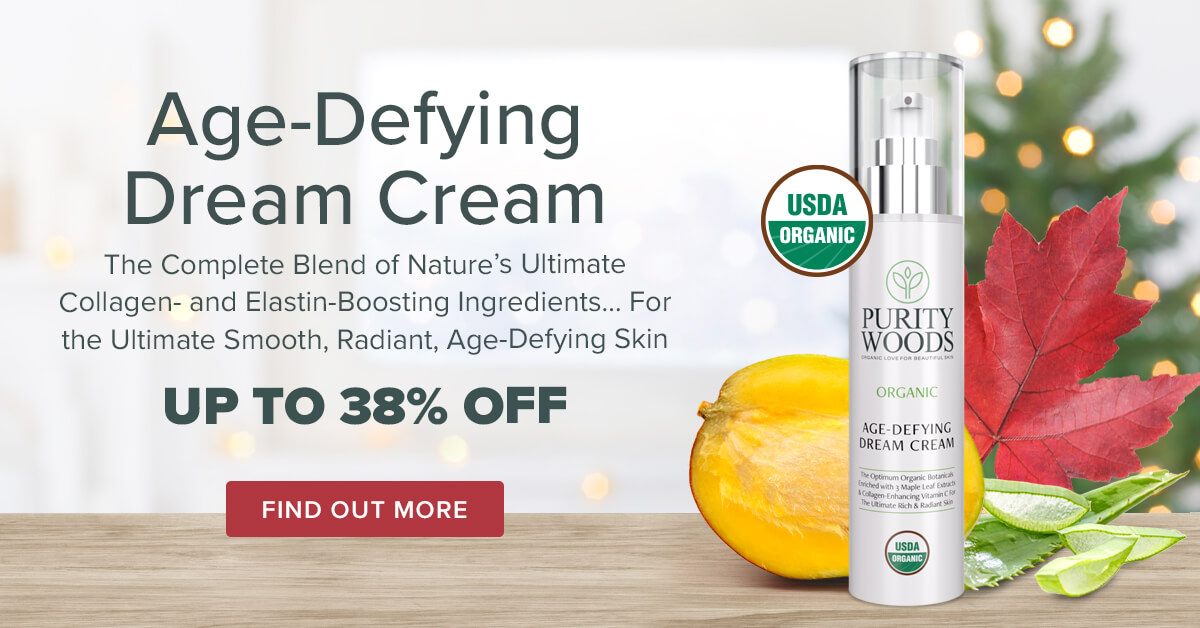




I’m a 49 year old female. I’m interested in the essential amino acids Are amino acids more important for continued muscle building or do I also need a protein powder if it’s hard to eat the required amount?